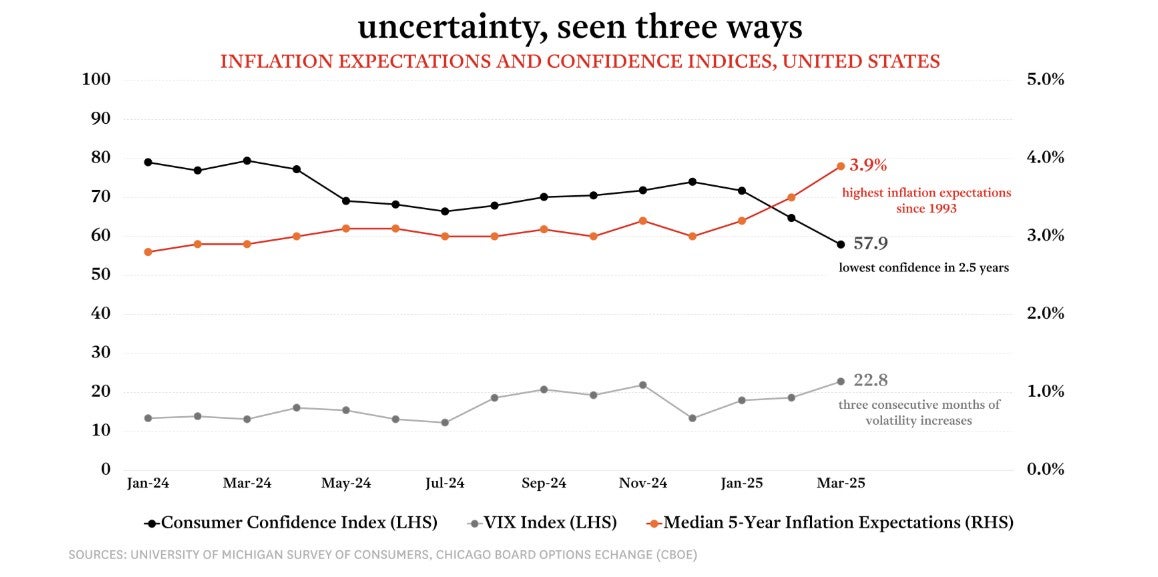
Most notably, inflation concerns have resurfaced with the past five CPI readings showing stickier-than-expected numbers. We have now entered the fifth year of inflation running hotter than the central bank’s target range. But at the same time, an aggressive trade agenda has introduced significant uncertainty that is weighing on economic growth and complicating spending decisions across all economic domains. Businesses struggle to make hiring commitments and consumers hesitate to spend—a combination that typically leads to reduced job creation and rising unemployment.
It's important to recall that the Fed operates under a dual mandate: not only keeping inflation within the target range but also maintaining maximum employment. While inflation dominated policy discussions throughout most of last year, employment concerns have now returned to the forefront of the Fed's decision-making calculus.
Signs of anxiety in the market are becoming increasingly evident in economic data. Inflation expectations have surged to historic highs; expected market volatility as measured by the VIX index has risen sharply in recent months; and the University of Michigan's widely watched consumer sentiment survey recently showed a dramatic downturn in outlook among respondents.

In addressing these indicators, the Fed's comments in the March meeting reflected the most direct response to the tariff agenda thus far, with Chair Powell stating that tariffs mean "further progress [on inflation] may be delayed"—a frank acknowledgment that the Fed now faces conflicting pressures as a weakening job market from trade policies pulls in one direction and inflation concerns tug in another.
Overall, the Fed maintained its forecast for 2025, anticipating two more rate cuts by the end of the year. Throughout its released comments and the following press conference, the key message was clear: the US economy is slowing but hasn't stalled, and the central bank remains at the ready for any further intervention.
Overall, the Fed maintained its forecast for 2025, anticipating two more rate cuts by the end of the year. Throughout its released comments and the following press conference, the key message was clear: the US economy is slowing but hasn't stalled, and the central bank remains at the ready for any further intervention.


